Capture the Data You Need with Mobile Smart Forms
Build flexible, powerful mobile forms easily with our intuitive form builder

Mobile Smart Forms for Field Data Collection and Capture
Even in today's digital age, the typical company that maintains a mobile field workforce collects and captures field data through paper—or spreadsheet-based processes. With so many things to keep track of, this leads to data inaccuracy, loss of information, and a significant disconnect between work orders and customer information. All of this adds up to lost productivity, repeat visits, and, ultimately, rapidly increasing costs.
There is a better way to enable your field workforce to collect and capture field data. With Field Squared Mobile Smart Forms, building flexible, powerful mobile forms is easy in our intuitive form builder. It’s as easy as create, design and publish. Field Squared Smart Forms help you to maintain field data collection and capture by digitizing all your paper field service forms, allowing you to share data across your field workforce, back-office or third-party systems, and customers.
Smart Forms are instantly available to your field workforce on their iOS or Android mobile device, right in the field—no more showing up for a work order with incorrect data or missing information.
You’re just a drag-and-drop away from digital mobile data collection bliss. Capturing sensitive health information? We’re HIPAA compliant.
Key Benefits
Build forms in minutes, simply drag-and-drop
Your data is safe in our secure and HIPAA compliant hands
Key Features
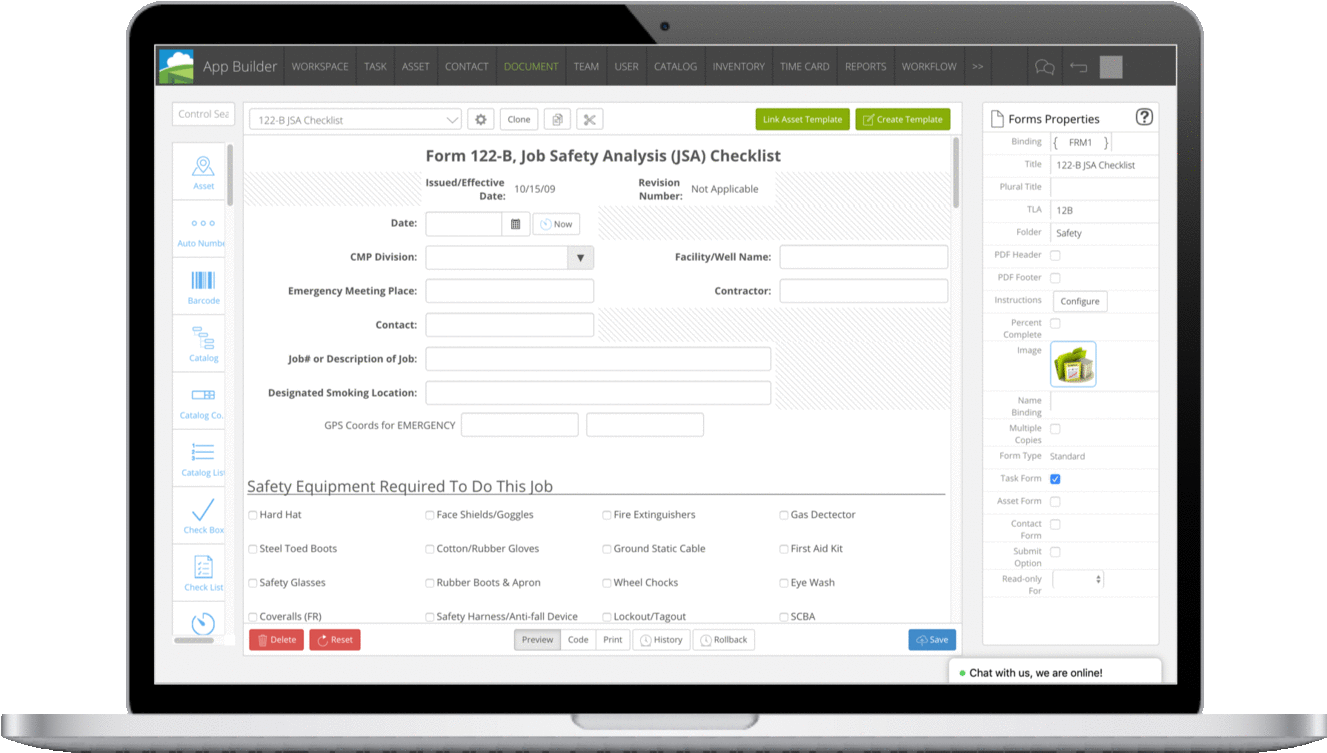
Industry-leading Mobile Forms Builder. Simply Drag and Drop
Digitize Data Collection with Intelligent Mobile Forms
Effortlessly create powerful, feature-rich digital mobile forms in minutes with our intuitive drag-and-drop forms builder. Any data collection needs you have are a snap, with a library of more than 60 fields or controls, as we refer to them. You get near-endless possibilities.
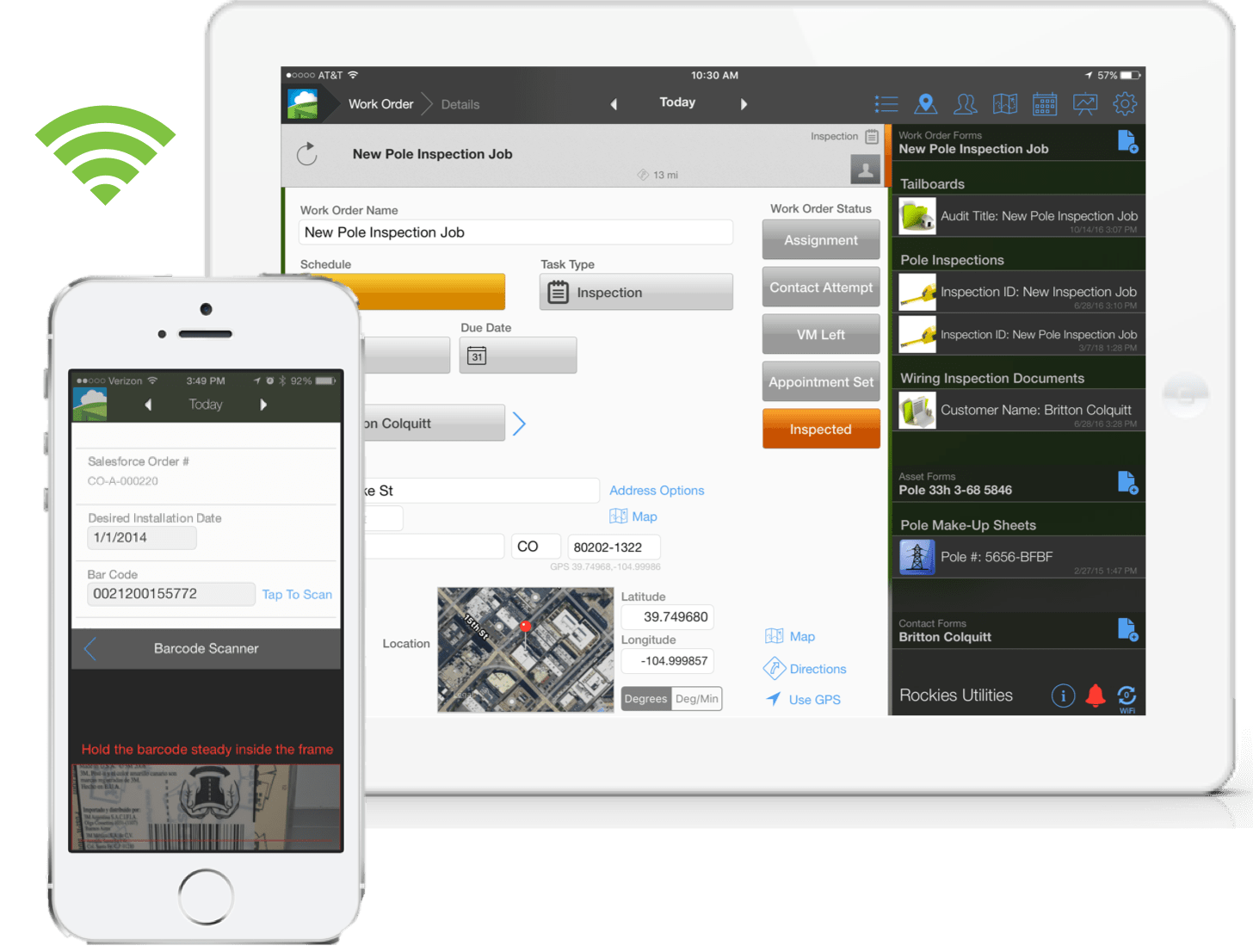
Offline Mobile Data Collection App – Anywhere, Anytime
In the world of mobile work, connectivity is a known issue, especially when working in remote areas on Earth. Field Squared Mobile Smart Forms are available via native iOS and Android apps, so your teams can collect data while on go—even offline. All changes are automatically synced when your connection is restored.
No loss of data, ever.
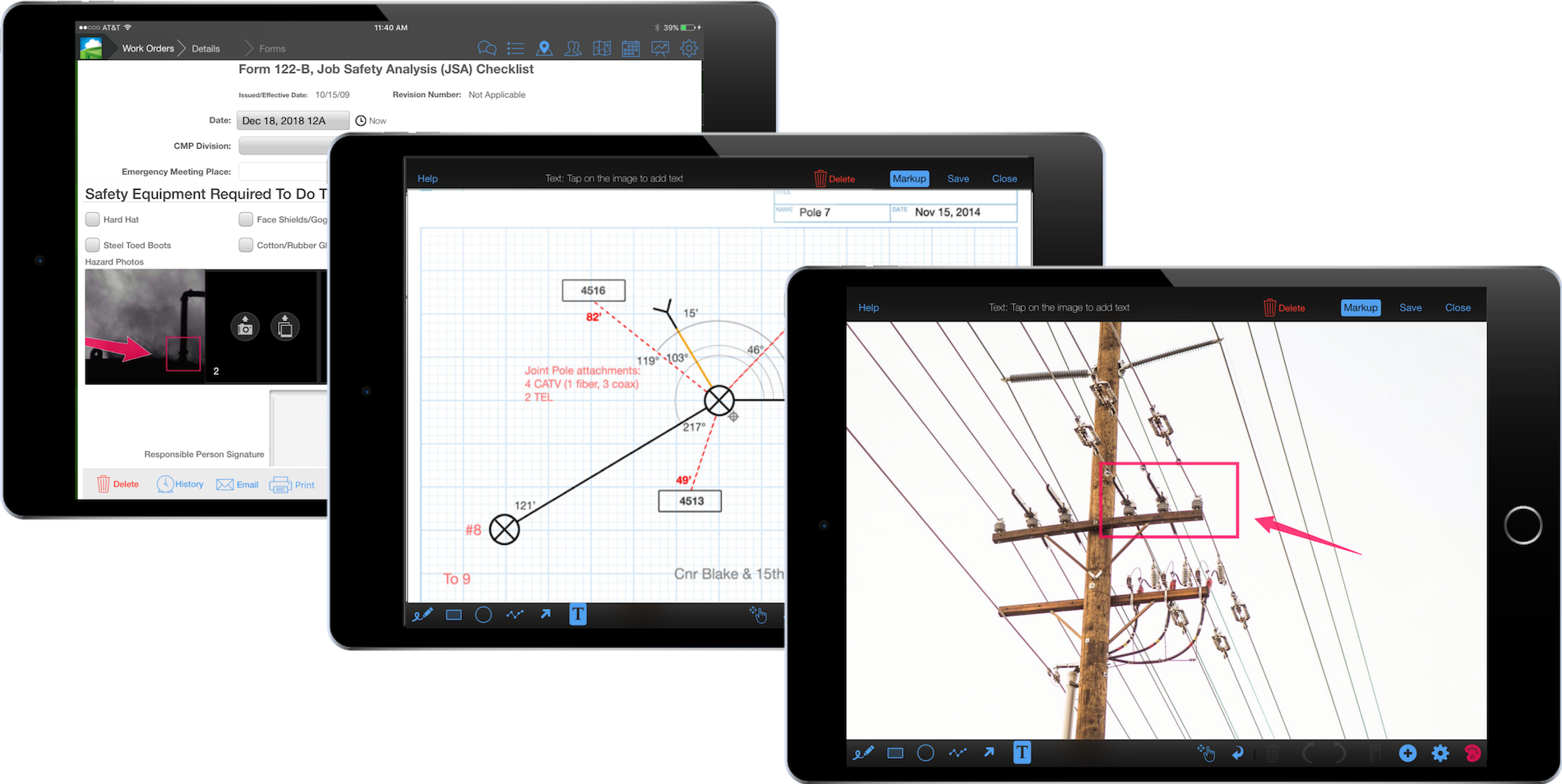
Data Collection Forms to Capture Photos, Images, Audio and Video
Field Squared Mobile Smart Forms enable your field workforce to easily employ digital data collection forms to capture photos, images, audio, and video directly in the form.
Collect a single photo, photo roll/collections, QR codes, and barcode fields. Your mobile data collection just got so much easier.
Taking a photo from the camera on your mobile device? Use the built-in markup tools to add shapes, text, highlight, and more. You can also scan barcodes, auto-populating the field with searchable serial numbers.
- Attach images to work orders, tasks, and assets
- Effortlessly add markup, annotations, and sketches to any photo
- Generate custom shapes using your own symbol library and create leader lines with distances and angles

Mobile Forms Software to Drive Efficiency with Intelligent Rules and Logic
One size doesn’t fit all, especially when it comes to mobile form data collection. Luckily, Field Squared Mobile Smart Forms provides built-in intelligence tools to help you drive efficiency across your teams.
Add skip logic and branching to quickly move through a form, only presenting the next field based on data entered in the previous field. Irrelevant fields are hidden from the user, so they never see them unless they need to.
Incorporate business rules, processes, calculations, and formulas based on criteria you specify, such as the type of form, or other factors, to improve data collection efficiency.
Field Workforce Management & Mobility
Watch this short product video (it’s only about 1-minute!) to see inside Field Squared’s field workforce management and mobility software.
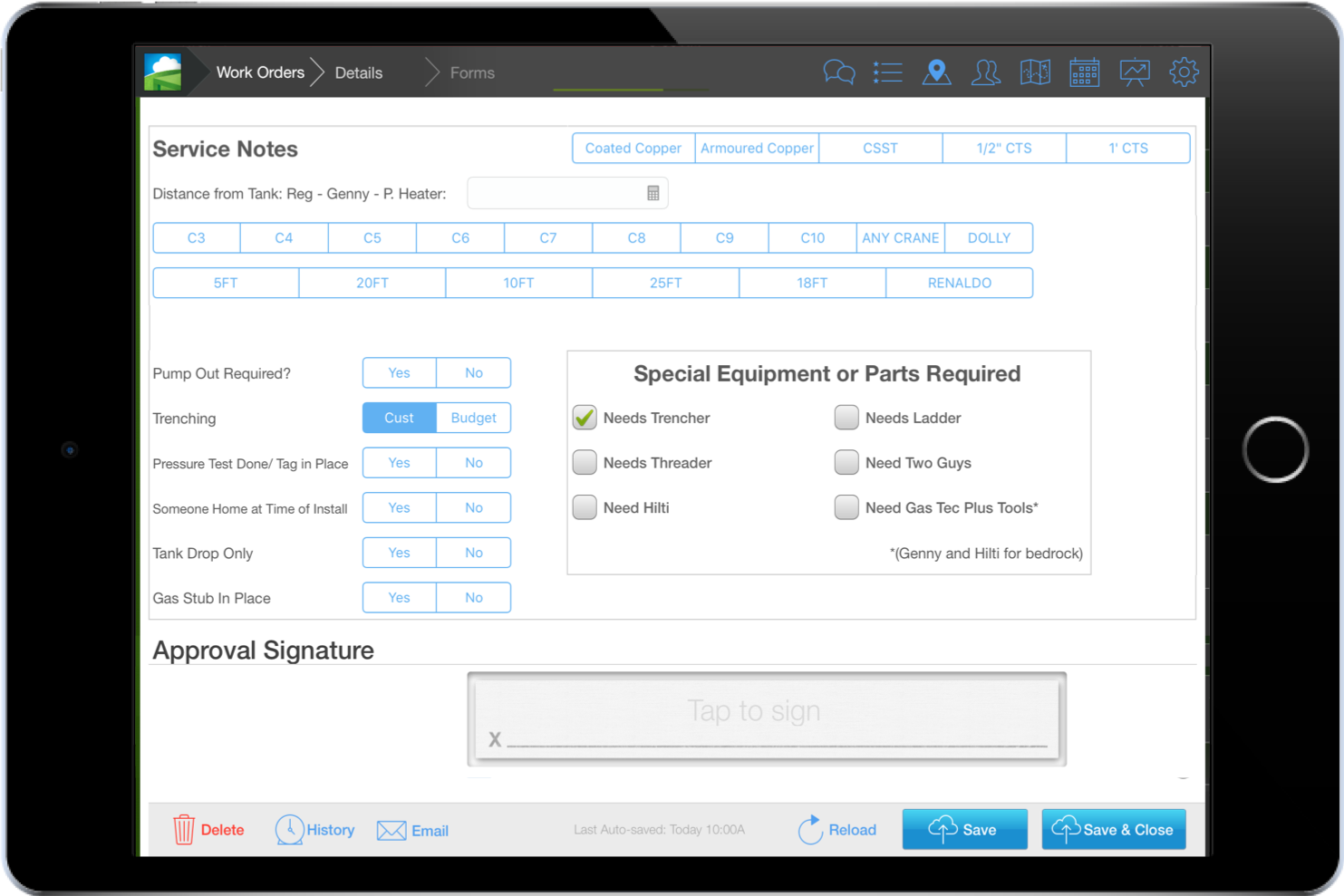
Field Data Collection App for Any Data Type
Signatures
Get your forms signed quickly by capturing signatures directly in the mobile form.
Graphs & Charts
Include graphs and pie charts to display relevant form data over time, or anytime you need to show data, well, in a chart.
Voice Dictations
Leverage effortless speech-to-text via Siri for hands-free data collection.
Numerical Sliders
Do you need to capture temperature or ranges on forms? Sliders allow you to easily slide your finger to set values.
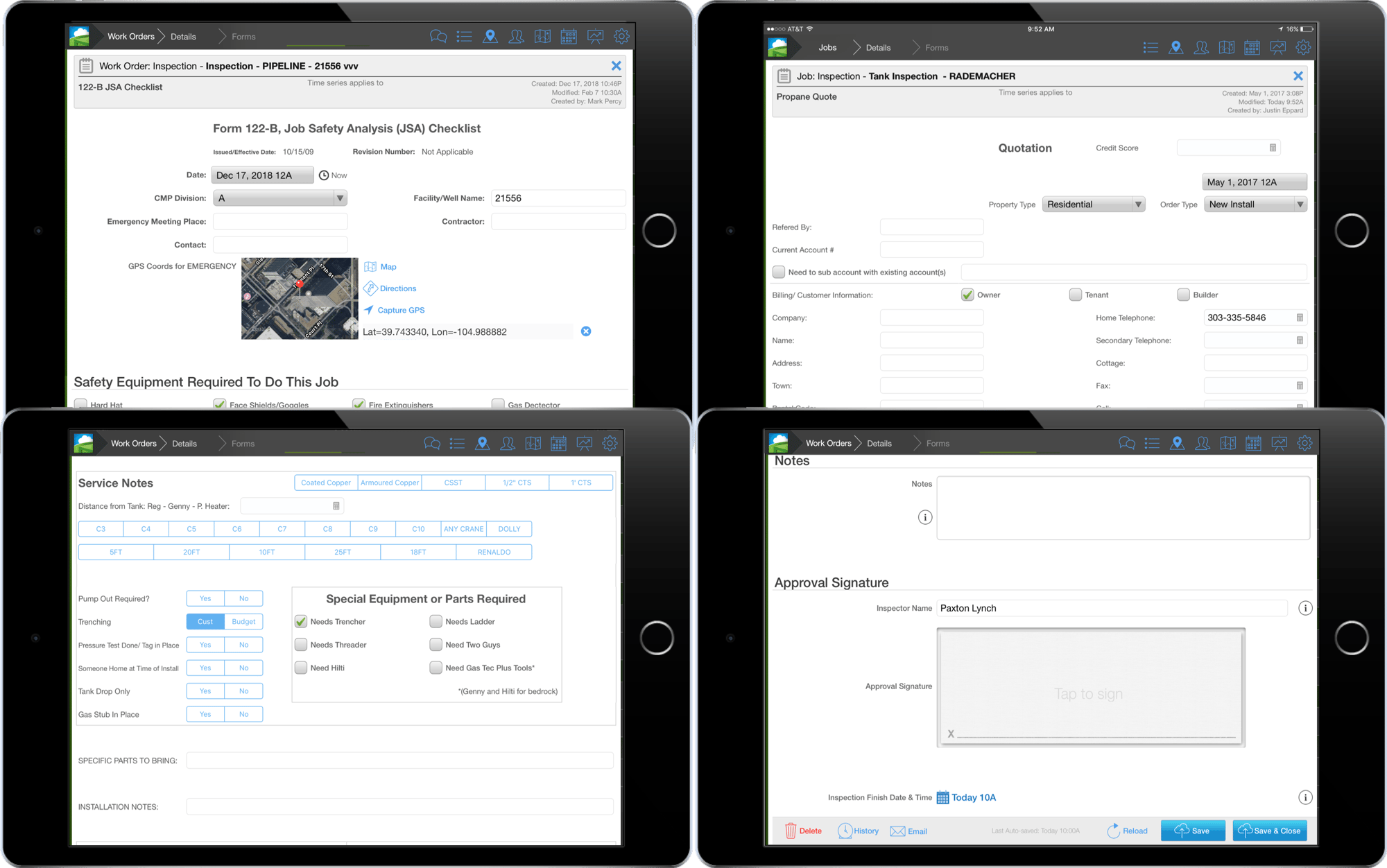
Mobile Smart Forms for Any Type of Work
Field operations differ from job type to job type. With Field Squared Mobile Forms, you don’t have to compromise. You can conduct any type of work with our industry-leading mobile forms.
- Inspections, Installations, and Surveys
- Pole Audits
- Job Safety Analysis (JSA) Checklists and Compliance Forms
- Maintenance and Repair Work
- Incident Reports
- Quotes
- Before and After Work
- Pre-Installation Audit
The possibilities are near endless.
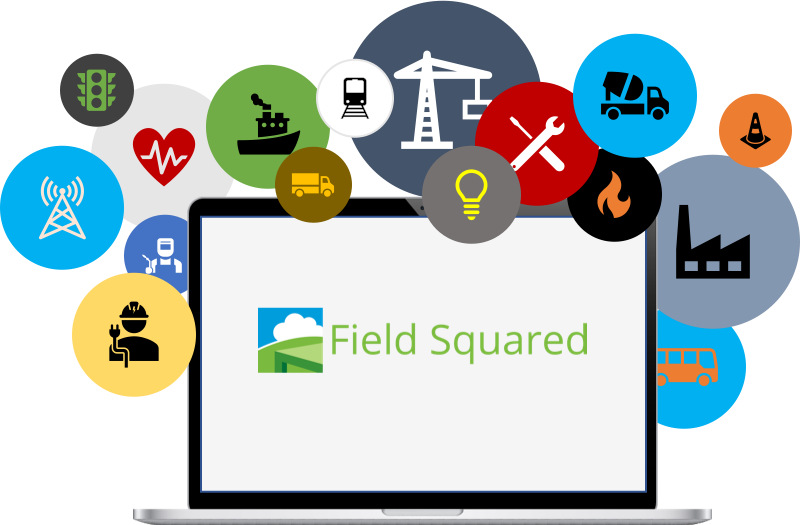
Take Your Industry-Specific Mobile Data Collection to the Next Level
Every industry has unique data collection needs that require specific mobile forms to get the job done, including:
- Oil & Gas Services – Plant rounds and environmental inspection forms
- Telecommunications – Tower installations, network maintenance or upgrades, and switch activities
- Utilities Services – Meter installations, upgrades, installs/disconnects, and maintenance
Whatever industry you operate in, Field Squared Mobile Smart Forms is flexible across your mobile form needs.
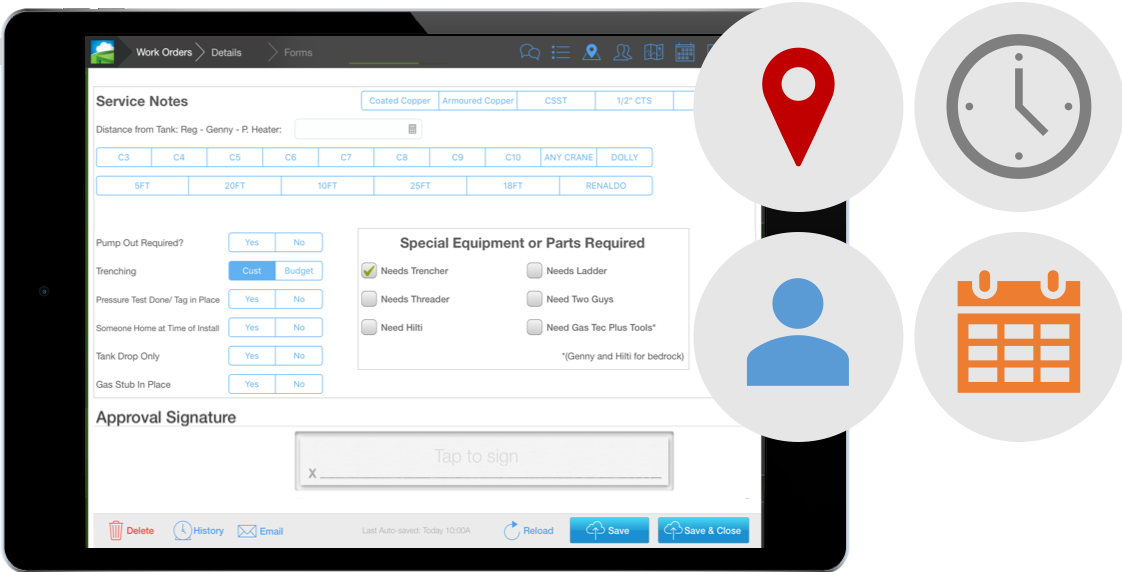
Know the Who, What, Where, and When of Everything
It’s not uncommon to audit and verify completed forms for legal or regulatory reasons. We make it easy: Every action in Field Squared is automatically stamped with the GPS, date, time, and user history.
More Resources
Ready to Get Started?
See inside Field Squared’s software in a live demo.
Explore what Field Squared can do for your business, from mobile forms to assets.



